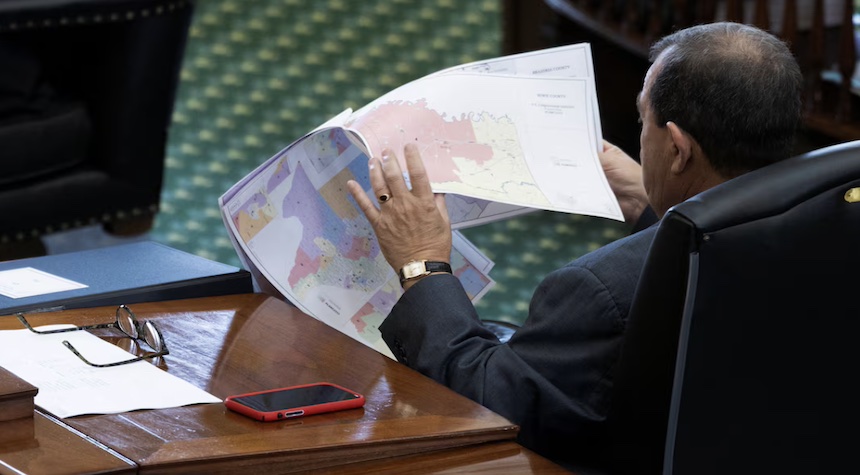The Texas Senate has given its final approval to a new congressional voting map that leans towards the Republican party. The map, which introduces five new districts that would seemingly favour Republicans, now awaits the signature of Gov. Greg Abbott, a Republican himself, who is expected to promptly sign it into law. This development follows earlier reports that former President Donald Trump has been advocating for this map to help the GOP maintain its slender majority in the 2026 midterm elections. However, Democratic resistance is anticipated, with vows to challenge the map in court.
The move by Trump and Texas’s Republican-majority Legislature has led to a two-week walkout by state Democrats and initiated a wave of redistricting efforts nationwide. Meanwhile, in a show of final opposition, Democratic plans to extend the Senate vote into the early morning hours in a bid to delay passage were thwarted.
State Sen. Carol Alvarado, head of the Senate Democratic caucus, had announced an intention to filibuster the bill with a long speech. However, following an extended dinner break, she was accused by Republicans of breaking a rule, alleging that she used a campaign email to promote her filibuster as fundraising. A spokesperson for Alvarado has not yet provided a comment.

Over the past weeks, the Texas Legislature has been in turmoil, with the drama largely unfolding in the House, where the map was ultimately approved on Wednesday. The bill’s passage was delayed during hours of debate, with Democrats pressing Republican Sen. Phil King, the measure’s sponsor, regarding the legality of the proposal. They allege that the redrawn districts contravene the Voting Rights Act by diluting voters’ influence based on race.
King steadfastly rejected these accusations, stating, “I had two goals in mind: That all maps would be legal and would be better for Republican congressional candidates in Texas.” He further expressed concerns about the potential loss of the Republican majority in the House if the map does not pass. This raises important questions about the broader implications of the redistricting battle playing out on a state-by-state basis, with governors from both parties vowing to redraw congressional maps.
The redraw of Texas is already reshaping the 2026 race. Democratic Rep. Lloyd Doggett, the dean of the state’s congressional delegation, has announced he will not seek reelection to his Austin-based seat if the new map takes effect. The president has also been encouraging other Republican-controlled states, including Indiana and Missouri, to revise their maps to add more winnable GOP seats.

Reports from California indicate that Democrats approved legislation calling for a special election in November for residents to vote on a redrawn congressional map intended to help Democrats secure five more House seats next year. Gov. Gavin Newsom quickly signed it, referring to the action as a reaction to an “assault on our democracy in Texas.”
While redistricting typically occurs once a decade, post a census, there are no national barriers to a state attempting to redraw districts mid-decade. The U.S. Supreme Court has stated that the Constitution does not outlaw partisan gerrymandering, only the use of race to redraw district lines. This development has left both sides expressing concern over the potential consequences of the redistricting war.
The significance of this should not be overlooked. As the struggle over redistricting continues, it serves as a reminder of the importance of staying informed and understanding the democratic processes that shape our nation.

